#Daniel Abreu
Explore tagged Tumblr posts
Text
– Prêmio Grampo 2024 de Grandes HQs – O resultado final: as 20 HQs mais votadas
O álbum Monica é o vencedor do Prêmio Grampo 2024 de Grandes HQs. A obra do quadrinista norte-americano Daniel Clowes publicada pela editora Nemo e traduzida por Érico Assis consta em nove das 20 listas dos jurados convidados do Grampo, tendo acumulado 81 pontos na contagem dos votos. A segunda colocação ficou com Patos – Dois anos nos campos de petróleo (WMF Martins Fontes), de Kate Beaton, com…

View On WordPress
#A noite dos palhaços mudos#As muitas mortes de Laila Starr#Bebel Abreu#Boy dodói#Carol Ito#Como pedra#Daniel Clowes#Debaixo d&039;água#Em ti me vejo#Fernanda Baukat#Filipe Andrade#Grampo#Grampo 2024#Grampo 24#Helô D&039;Angelo#José Aguiar#Kate Beaton#Laerte#Lark#Léa Murawiec#Lielson Zeni#Luckas Iohanathan#Marília Marz#Maria Clara Carneiro#Monica#O grande vazio#O livro dos pássaros#Patos#Prêmio Grampo#Prêmio Grampo 2024
1 note
·
View note
Text
– Prêmio Grampo 2024 de Grandes HQs – O resultado final: as 20 HQs mais votadas
O álbum Monica é o vencedor do Prêmio Grampo 2024 de Grandes HQs. A obra do quadrinista norte-americano Daniel Clowes publicada pela editora Nemo e traduzida por Érico Assis consta em nove das 20 listas dos jurados convidados do Grampo, tendo acumulado 81 pontos na contagem dos votos. A segunda colocação ficou com Patos – Dois anos nos campos de petróleo (WMF Martins Fontes), de Kate Beaton, com…

View On WordPress
#A noite dos palhaços mudos#As muitas mortes de Laila Starr#Bebel Abreu#Boy dodói#Carol Ito#Como pedra#Daniel Clowes#Debaixo d&039;água#Em ti me vejo#Fernanda Baukat#Filipe Andrade#Grampo#Grampo 2024#Grampo 24#Helô D&039;Angelo#José Aguiar#Kate Beaton#Laerte#Lark#Léa Murawiec#Lielson Zeni#Luckas Iohanathan#Marília Marz#Maria Clara Carneiro#Monica#O grande vazio#O livro dos pássaros#Patos#Prêmio Grampo#Prêmio Grampo 2024
1 note
·
View note
Text
There are sports, and then there are sports. Extreme athletes push themselves beyond perceived limits, flying, diving, and running farther than it seems the human body has any right to go. And thanks to the X Games, Red Bull events, and even the Olympics, they’ve been given platforms to shine, allowing athletes like surfer Bethany Hamilton and snowboarder Shaun White to become household names.
(read more)
#shondaland#x games#xgames#extreme sports#olympics#Lorena Abreu#parkour#Courtney Dauwalter#ultra marathon#Zandi Ndhlovu#Black Mermaid Foundation#freediving#Bryce Wettstein#skate boarding#Danielle Williams#Melanin Base Camp
1 note
·
View note
Text
Even MORE motivation for tomorrow. Remember EVERY innocent person TRAFFICKED to that El Salvadoran TORTURE prison by LIES from Shitbreak Trump, his creepy as VP and fake ass Christian of the house Mike Johnson along with the MAGA Barbie CUNT Karoline Leavitt:
Agelviz Sanguino, Widmer Josneyder
Aguilar Rodriguez, Nolberto Rafael
Aguilera Aguero, Gustavo Adolfo
Albornoz-Quintero, Henrry
Alvarado Borges, Neri
Angulo-Aparicio, Jinder
Aray-Cardona, Jose
Arregoces Rincon, Jose
Azuaje Perez, Nixon Jose
Barreto Villegas, Rolando
Bastidas Venegas, Jose
Basulto-Salinas, Marcos
Batista-Arias, Elvis
Belloso Fuenmayor, Alirio
Benavides Rivas, Yornel Santiago
Blanco-Bonilla, Andry
Blanco-Marin, Angel
Bolivar Cruz, Angel
Bracho Gomez, Victor
Brazon-Lezama, Javiar
Briceno-Gonzalez, Jose
Briceno-Gonzalez, Jean
Bustamante-Dominguez, Robert
Cabrera-Rico, David
Canizalez Arteaga, Carlos
Caraballo Tiapa, Franco
Cardenas-Silva, Johan
Carmona Bastista, Yorbi
Carmona Hernandez, Jose
Cedeno Contreras, Bruce Embelgert
Cedeno-Gil, Andrys
Chacin Gomez, Jhon
Chirinos Romero, Wild
Chivico Medina, Carlos
Colina Arguelles, Rosme
Colina Caseres, Miguel
Colina-Suarez, Alejandro
Colmenares Solorzano, Leonardo Jose
Colmenarez Abreu, Aldo
Contreras-Gonzalez, Yordano
Cornejo Pulgar, Frizgeralth De Jesus
Corrales-Moreno, Emilio
Davila Fernanadez, Luis
Delgado Pina, Aldrin
Depablos Requena, Jheison
Diaz-Lugo, Kleiver
Duarte Rodriguez, Richard
Duran Perez, Joseph Gregory
Echavez-Paz, Leonel
Elista-Jimenez, Robert
Escalona Carrizo, Yender
Escalona Sevilla, Angelo
Escobar Blanco, Pedro
Escobar Falcon, Yolfran
Fernandez Sanchez, Julio Rafael
Fernandez, Yohan
Fernandez-Subero, Mikael
Flores Jimenez, Wilken Rafael
Flores Rodriguez, Jose
Flores-Lopez, Jose
Fonseca Daboin, Cristhofer
Fuenmayor-Crespo, Roneil
Garcia Casique, Francisco
Garcia Abrego, Kilmar
Garcia Prado, Leonardo
Giron Maurera, Richard
Gonzalez Troconis, Julio
Gonzalez Frailan, Jose Leon
Gonzalez Fuenmayor, Angel Jesus
Gonzalez Pineda, Oscar
Gonzalez-Rodriguez, Charlie
Graterol-Farias, Winder
Gualdron Gualdron, Luis
Gualtero Quiroz, Deibin
Guerrero Padron, Keivy
Guevara Munoz, Wilvenson
Guiterrez-Sierra, Wilker
Gutierrez Flores, Merwil
Hernandez Carache, Yeison
Hernandez Carache, Darwin Gerardo
Hernandez Herrera, Edwuar Jose
Hernandez-Hernandez, Jhonnael
Hernandez Gonzalez, Manuel
Hernandez Hernandez, Angel
Hernandez Juarez, Yorby
Hernandez Romero, Andry
Hueck Escobar, Jesus
Hung Mendoza, Jordan
Hurtado Quevedo, Eddie Adolfo
Indriago-Alvarez, Donovan
Izaguirre-Granado, Randy
Jaimes-Rincon, Yeison
Jerez-Hernandez, Yohendry
Justo Garcia, Jose
Laya-Freites, Jefferson
Leal-Bautista, Keiber
Leal-Estrada, Kervin
Lemus Cagua, Diego
Lizcano-Basto, Josue
Lopez Bolivar, Jose
Lopez Lizano, Maikol
Lopez-Rodriguez, Geomar
Lozada Sanchez, Wuilliam
Lozano-Camargo, Daniel
Lugo Zavala, Johendry
Lugo-Acosta, Yermain
Machado Martinez, Onaiker
Machado-Rodriguez, Jose
Manrique, Edson
Manzo Lovera, Lainerke
Marcano Silva, Luis
Marea-Medina, Ronald
Marin Zambrano, Jhonervi Josue
Marquez Pena, Jose
Marrufo Hernandez, Uriel David
Martinez Vargas, Kerbin
Martinez Vegas, Rafael
Martinez-Borrego, Tito
Martinez-Gonzalez, Yohangel
Mata Fornerino, Wilfredo Jose
Mata-Ribeiro, Yoswaldo
Mathie Zavala, Hotsman Ricardo
Medina-Martinez, Alexis
Melendez Rojas, Edwin
Mendez Boyer, Alex
Mendez Mejias, Angel
Mendez-Gomez, Luis
Mendoz Nunez, Carlos
Mendoza Ortiz, Maikol Solier
Mendoza Pina, Jean Claude
Mendoza Ramirez, Jonathan
Mogollon Herrera, Henry
Molina-Acevedo, Roger
Montero Espinoza, Ervinson
Montilla-Rivas, Jose
Mora-Balzan, Jose
Morales-Rolon, Andres
Moreno-Camacho, Cristopher
Moreno-Ramirez, Maikel
Morillo-Pina, Luis
Moron Cabrera, Yuber
Munoz Pinto, Luis
Navas Vizcaya, Ali
Navas-Diaz, Obed
Nieto Contreras, Kevin
Nunez-Falcon, Luis
Olivera Rojas, Maikel
Orta-Campos, Junior
Ortega Garcia, Felix
Otero Valestrines, Luis
Palacios-Rebolledo, Leoner
Palencia-Benavides, Brayan
Parra Urbina, Eduard
Paz-Gonzalez, Daniel
Pena Mendez, Jose Antonio
Penaloza Chirinos, Ysqueibel Yonaiquer
Perez Perez, Cristian
Perez-Llovera, Juan
Perfecto La Rosa, Moises
Perozo-Colina, Carlos
Perozo-Palencia, Andy
Petit Findlay, Andersson Steven
Petterson Torres, Christean
Pineda Lezama, Jesus
Pinto Velasquez, Cristhian
Plaza-Carmona, Jonathan
Primoschitz Gonzalez, Albert
Querales Martinez, Anderson Jose
Quintero Chacon, Edicson
Ramirez Ramirez, Jonathan Miguel
Ramos Bastidas, Jose
Ramos Ramos, Juan Jose
Reyes Barrios, Jerce Egbunik
Reyes Mota, Frengel
Reyes Ollarvides, Ronald
Reyes-Villegas, Arlinzon
Rincon Bohorquez, Omar
Rincon-Rincon, Ringo
Rios Andrade, Jesus
Rivera Gonzalez, Luis
Rivero-Coroy, Jean
Rodriguez, Edwin
Rodriguez Goyo, Alejandro
Rodriguez Lugo, Luis Gustavo
Rodriguez Parra, Alber
Rodriguez Rojas, Kenlyn
Rodriguez-Da Silva, Fernando
Rojas, Deibys
Rojas-Mendoza, Miguel
Romero Chirinos, Ildemar Jesus
Romero Rivas, Erick
Roos Ortega, Jesus
Rosal-Gelvez, Hector
Rubio-Petrola, Jose
Saavedra-Caruci, Robinson
Salazar-Cuervo, Pedro Luis
Sanchez Bigott, Yorbis
Sanchez Paredes, Idenis
Sanchez-Arteaga, Fernando
Sanchez-Bermudez, Marco
Santiago Ascanio, Ronald
Sarabia Gonzalez, Anyelo
Semeco Revilla, Darwin Xavier
Sierra Cano, Anyelo
Silva Casares, Jason Alfredo
Silva Freites, Carlos Julio
Silva-Ramirez, Aaron
Soto Manzana, Omar
Suarez-Fuentes, Joen
Suarez-Nunez, Luis
Suarez-Salas, Nery
Suarez-Trejo, Arturo
Tapia Colina, Jesus
Teran Aguilar, Carlos
Testa Leon, Orlando Jesus
Toro Noguera, Yonel
Torrealba Torrealba, Yonathan
Torres Archila, Amber
Torres Herrera, Euder Jose
Torres-Polanco, Carlos
Tortosa Guedez, Jorge
Tovar-Marcano, Cesar
Travieso Gonzalez, Kleiver
Troconis Gonzalez, Yhon Deivis
Uzcategui Vielma, Carlos
Vaamondes Barrios, Miguel
Vargas Lugo, Henry
Vazquez Morillo, Nicola
Vega Sandia, Wilmer
Vera Villamizar, Wladimir
Villa-Montano, Enson
Villafranca Rincones, Carlos Eduardo
Villegas-Frites, Ilels
Yamarte-Fernandez, Mervin
Yanez-Arangure, Luis
Zabaleta-Morillo, Keiber
Zambrano Perez, Julio
Zambrano Torrealba, Gabriel
Zarraga Rosales, Jorge
These are people we MUST fight for too. They are leaving INNOCENT FAMILY AND CHILDREN BEHIND.
#anti donald trump#fuck donald trump#fuck jd vance#anti jd vance#anti tom homan#fuck tom homan#fuck karoline leavitt#anti karoline leavittt#anti maga#fuck maga#fuck republicans#fuck marco rubio#anti marco rubio#fuck republikkkans#anti republican#us politics#politics#and the sad thing? i do NOT see the us getting these men out because either they DIED from hatred or an accident in the prison#OR they would make one HELL of a 60 minute special
56 notes
·
View notes
Text

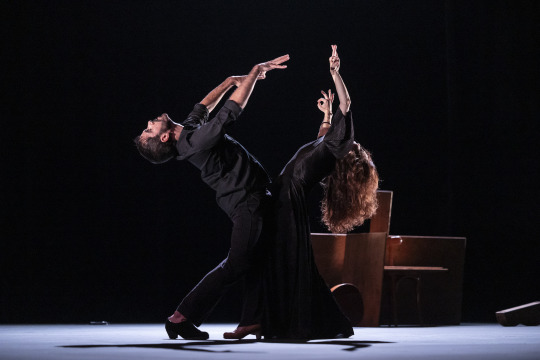


Ya se encuentra disponible el retiro de entradas para los espectáculos gratuitos de sala que trae el Festival Internacional Antof a Mil 2025 "Más Humanidad”, evento de artes escénicas presentado por Escondida | BHP y Fundación Teatro a Mil, y que este año se desarrollará entre el 3 y el 12 de enero de 2025 con una programación que profundizará en la empatía, la niñez y la conexión entre las personas.
En esta edición 2025, se podrán apreciar espectáculos de compañías provenientes de Reino Unido, España, Argentina y Chile, las que se presentarán en Antofagasta, Mejillones, Peine y San Pedro de Atacama. Las entradas para las 8 funciones en sala son gratuitas y se pueden descargar del sitio web Antof a Mil, donde también se puede encontrar el detalle de los espectáculos de calle que se presentarán en la región y que no requieren retiro de entradas.
Inauguración Antof a Mil 2025
La inauguración de Antof a Mil tendrá lugar el día 3 de enero con la obra nacional LIMPIA, puesta en escena dirigida por Alfredo Castro basada en la celebrada novela homónima de Alia Trabucco Zerán, dando el puntapié inicial al festival en el Teatro Municipal de Antofagasta (Sucre #433) a las 20:30 horas.
La programación continuará con SANKÖFA, obra que rescata la historia y la música de los afrodescendientes, y con Tiroteo, escrita y dirigida por Franco Rocco Cancino y que reflexiona sobre la educación y la violencia, son los montajes seleccionados por el jurado regional multidisciplinar del festival y se presentarán el 5 y 6 de enero en ILÚ Espacio Creativo a las 20:00 horas, y el 10 y 11 de enero a las 20:00 horas en el teatro del Liceo Experimental Artístico, respectivamente.
Desde España, llegan los Premios Nacional de Danza, Olga Pericet y Daniel Abreu con su obra La Materia que se presentará el 8 de enero en el Teatro Municipal de Antofagasta a las 20:30 horas. Continuando con la programación y espectáculos de sala, el día 9 de enero a las 20:30 horas en el Teatro Municipal de Antofagasta, se presenta la obra Hamlet deambula en círculos, dirigida por Cristián Plana y protagonizada por el reconocido actor Héctor Noguera quien celebra con este montaje los 30 años de su compañía Teatro Camino.
En tanto, el 11 de enero a las 21:00 en el mismo teatro será el turno de TE MANA HAKAÂRA: el poder que permanece, una coproducción de Teatro a Mil y la más reciente obra de danza de la compañía antofagastina La Huella Teatro bajo la dirección de Alejandra Rojas, que pone en valor la memoria histórica de rapanui a través de la historia de sus mujeres.
Foto: TE MANA HAKAÂRA: el poder que permanece. Crédito: La Huella Teatro.
Espectáculos de calle
Amal llega a Chile, donde se presentará por primera vez en el Festival Internacional Antof a Mil 2025, comenzando su recorrido el dia jueves 9 de enero en San Pedro de Atacama (calles: Ignacio Carrera Pinto con Pedro de Valdivia) a las 11:00 horas y Peine en la Iglesia San Roque a las 20:00 horas, para continuar en Mejillones el sábado 11 de enero en el Muelle Artesanal a las 11:00 horas y finalizar en Antofagasta el domingo 12 de enero por el sector norte de la ciudad (Río Maule con detective Salón Salas Fuentealba) a las 11:00 horas y finalizando su recorrido a las 20:00 en Explanada del estadio regional ubicado en de Av. Grecia frente a calle Hugo Silva Endeiza.
Durante su travesía, Amal nos recordará que la niñez debe ser protegida siempre y en todo lugar, entregando un mensaje de humanidad y tendiendo un puente hacia las celebraciones por los 80 años de la entrega del Premio Nobel a Gabriela Mistral.
Pachakuna: Guardianes de los Andes Pachakuna & Concierto en Antofagasta de La Patogallina | Con INTI ILLIMANI HISTÓRICO trío + TAMBOBRASS , el aplaudido pasacalle rescata a los animales sagrados de la cosmovisión andina con bailes y música en vivo junto a comparsas andinas locales, estará en Antofagasta el 4 de enero explanada frente a estadio regional a las 20:30 hrs y en Mejillones el 5 de enero frente a teatro Gamelin Guerra a las 20:30 horas.
En tanto, las calles de Antofagasta recibirán el 8 de enero la creación argentina Efectos especiales, un espectáculo ciudadano de los artistas argentinos Luciana Acuña y Alejo Moguillansky que invita al público a ser testigo y parte de un emocionante rodaje de cine en vivo a las 19:00 horas en el centro de la ciudad.
La programación completa de Antof a Mil es de carácter gratuito y la descarga de entradas para los espectáculos de sala ya se encuentra disponible junto con la programación completa en el sitio www.teatroamil.cl/antofamil25
Stands informativos
Niños, jóvenes y adultos mayores que necesiten ayuda para descargar sus entradas, podrán hacerlo directamente en los stands informativos que se han dispuesto en distintos puntos de la ciudad:
Del 10 al 13 de diciembre de 09:00 a 13:00 hrs en el Liceo Experimental Artístico ubicado en José Santos Ossa #1939.
Del 16 al 27 de diciembre y del 2 al 3 de enero de 09:00 a 13:00 hrs en el Teatro Municipal de Antofagasta ubicado en Sucre #433.
Ya se encuentra disponible el retiro de entradas para los espectáculos gratuitos de sala que trae el Festival Internacional Antof a Mil 2025 "Más Humanidad”, evento de artes escénicas presentado por Escondida | BHP y Fundación Teatro a Mil, y que este año se desarrollará entre el 3 y el 12 de enero de 2025 con una programación que profundizará en la empatía, la niñez y la conexión entre las personas.
En esta edición 2025, se podrán apreciar espectáculos de compañías provenientes de Reino Unido, España, Argentina y Chile, las que se presentarán en Antofagasta, Mejillones, Peine y San Pedro de Atacama. Las entradas para las 8 funciones en sala son gratuitas y se pueden descargar del sitio web Antof a Mil, donde también se puede encontrar el detalle de los espectáculos de calle que se presentarán en la región y que no requieren retiro de entradas.
Inauguración Antof a Mil 2025
La inauguración de Antof a Mil tendrá lugar el día 3 de enero con la obra nacional LIMPIA, puesta en escena dirigida por Alfredo Castro basada en la celebrada novela homónima de Alia Trabucco Zerán, dando el puntapié inicial al festival en el Teatro Municipal de Antofagasta (Sucre #433) a las 20:30 horas.
Espectáculo internacional imperdible:
Desde España, llegan los Premios Nacional de Danza, Olga Pericet y Daniel Abreu con su obra LA MATERIA Dos bailaores, premios nacionales de danza de España, Olga Pericet y Daniel Abreu, se unen para presentar La Materia, una premiada pieza de flamenco que transita por un viaje a los orígenes del flamenco, con la que debutan en el Festival Teatro a Mil 2025. se presentará el 8 de enero en el Teatro Municipal de Antofagasta a las 20:30 horas.
Este espectáculo es aclamado por la crítica y el público, quienes reconocen su dominio técnico, la armonía y el preciosismo de su trabajo. Inspirada en las guitarras de Antonio de Torres, Olga Pericet y Daniel Abreu desafían un mundo de retos para explorar el instrumento y su belleza desde su origen.
Las entradas aún se encuentran disponibles y estas pueden ser descargadas a través de la página de Antofamil.cl o por sistema ticketplus.cl, una oportunidad única para todos los amantes de la danza y el flamenco.
Foto: La Materia , Credito: Alain Scherer.
En tanto, el 11 de enero a las 21:00 en el mismo teatro será el turno de TE MANA HAKAÂRA: el poder que permanece, una coproducción de Teatro a Mil y la más reciente obra de danza de la compañía antofagastina La Huella Teatro bajo la dirección de Alejandra Rojas, Con un enfoque de género y la valoración de la tradición, oral, La Huella Teatro busca visibilizar la identidad Rapanui y contribuir simbólicamente a la restauración de su memoria poniendo en el centro la figura femenina, con el fin de desentrañar la propia voz y corporalidad de la mujer, entendiéndose como dispositivo de registro y testigo de los principales sucesos de su historia cultural social y política.
Espectáculos de calle
Amal llega a Chile, donde se presentará por primera vez en el Festival Internacional Antof a Mil 2025, comenzando su recorrido el dia jueves 9 de enero en San Pedro de Atacama (calles: Ignacio Carrera Pinto con Pedro de Valdivia) a las 11:00 horas y Peine en la Iglesia San Roque a las 20:00 horas, para continuar en Mejillones el sábado 11 de enero en el Muelle Artesanal a las 11:00 horas y finalizar en Antofagasta el domingo 12 de enero por el sector norte de la ciudad (Río Maule con detective Salón Salas Fuentealba) a las 11:00 horas y finalizando su recorrido a las 20:00 en Explanada del estadio regional ubicado en de Av. Grecia frente a calle Hugo Silva Endeiza.
Durante su travesía, Amal nos recordará que la niñez debe ser protegida siempre y en todo lugar, entregando un mensaje de humanidad y tendiendo un puente hacia las celebraciones por los 80 años de la entrega del Premio Nobel a Gabriela Mistral.
Pachakuna: Guardianes de los Andes Pachakuna & Concierto en Antofagasta de La Patogallina | Con INTI ILLIMANI HISTÓRICO trío + TAMBOBRASS , el aplaudido pasacalle rescata a los animales sagrados de la cosmovisión andina con bailes y música en vivo junto a comparsas andinas locales, estará en Antofagasta el 4 de enero explanada frente a estadio regional a las 20:30 hrs y en Mejillones el 5 de enero frente a teatro Gamelin Guerra a las 20:30 horas.
En tanto, las calles de Antofagasta recibirán el 8 de enero la creación argentina Efectos especiales, un espectáculo ciudadano de los artistas argentinos Luciana Acuña y Alejo Moguillansky que invita al público a ser testigo y parte de un emocionante rodaje de cine en vivo a las 19:00 horas en el centro de la ciudad.
La programación completa de Antof a Mil es de carácter gratuito y la descarga de entradas para los espectáculos de sala ya se encuentra disponible junto con la programación completa en el sitio www.teatroamil.cl/antofamil25
Stands informativos
Niños, jóvenes y adultos mayores que necesiten ayuda para descargar sus entradas, podrán hacerlo directamente en los stands informativos que se han dispuesto en distintos puntos de la ciudad:
Del 26 al 27 de diciembre y del 2 al 3 de enero de 09:00 a 13:00 hrs y de 15:00 a 18:00 horas en el Teatro Municipal de Antofagasta ubicado en Sucre #433.
El Festival Internacional Antof a Mil es presentado por Fundación Teatro a Mil y Escondida | BHP, con el apoyo del Ministerio de las Culturas, las Artes y el Patrimonio y las municipalidades de Antofagasta, Mejillones y San Pedro de Atacama. Medios asociados: TVN y Radio Biobío.
#Teatro#Art#Arts#Arte#Culture#Cultura#Antofagastamil#Chile#Chilean#LATAM#Escenario#Tablas#Dramaturgia#Pasacalle
3 notes
·
View notes
Text
A prison officer who was filmed having sex with an inmate has pleaded guilty to misconduct in a public office.
Linda De Sousa Abreu, 30, was on duty at HMP Wandsworth in London when she entered the prisoner's cell and had sex with him on 27 June.
The encounter was filmed by another inmate and lasted for almost five minutes.
The mother, from Fulham, southwest London, was identified by HMP Wandsworth staff and arrested by the Metropolitan Police at Heathrow Airport after the footage went viral.
She was planning to fly to Madrid and telephoned the prison as she fled to the airport to say that she was not returning to work.
De Sousa Abreu pleaded guilty to one count of misconduct in a public office at a hearing at Isleworth Crown Court on Monday.
Abuse of position
The prosecution's case was that she had wilfully committed misconduct in a public office by abusing her position as a prison officer to have sex with an inmate.
De Sousa Abreu, who holds a Portuguese passport, was granted conditional bail and will next appear at Isleworth Crown Court on 7 November.
While Crooks’ motive continues to be a mystery, new details continue to emerge about the gunman’s actions.
House Foreign Affairs Committee Chairman Michael McCaul told CBS’ Face the Nation on Sunday that Crooks was plotting a “diversion by blowing up his vehicle on the other side of the property, and then he could escape”.
He claimed that the gunman had a detonation device on his body and two bombs in his vehicle.
It also emrgd that, at around 3.50pm that day, Crooks had flown a drone for 11 minutes over a path about 200 yards from the podium where Trump would stand.
This was 36 minutes before law enforcement officers even became aware if his whereabouts.
The Independent is the world’s most free-thinking news brand, providing global news, commentary and analysis for the independently-minded. We have grown a huge, global readership of independently minded individuals, who value our trusted voice and commitment to positive change. Our mission, making change happen, has never been as important as it is today.
Tetteh Turkson, of the Crown Prosecution Service, said: "This was a shocking breach of the public's trust. De Sousa was clearly an enthusiastic participant who wrongly thought she would avoid responsibility.
"The CPS recognises there is no excuse for any prison officer who conducts themselves in such a manner, and we will never hesitate to prosecute those who abuse their position of power.
"After working closely with the Metropolitan Police to build the strongest possible case, De Sousa had no option but accept she was guilty. She will now rightly face the consequences of her actions."
Deep concerns over HMP Wandsworth
The video of De Sousa Abreu emerged weeks after a watchdog said HMP Wandsworth should be put into emergency measures after an inspection raised concerns over ongoing failings in security following the alleged escape of Daniel Khalife in September last year.
The "deeply concerning inspection" also found severe overcrowding, vermin, drugs, violence and rising self-harm, where seven prisoners had taken their own lives in the past year.
In response, the chief inspector of prisons Charlie Taylor wrote to the justice secretary Alex Chalk to issue an urgent notification for improvement.
Khalife, 22, is due to go on trial at the Old Bailey in October.
He has pleaded not guilty to the charges against him.
3 notes
·
View notes
Note
Hello! Would you be willing to share any Venezuelan FCs anywhere from their early 20s to late 40s that are actors/actresses? Or possibly know of anyone in the RPC who can point me towards some please? It's okay if they don't have gifs yet because I would love to make some! Thank you kindly!
Scarlet Ortiz (1974) Venezuelan.
Marieh Delfino (1977) Venezuelan [Spanish, Basque, Catalan, Portuguese, Italian, and Dutch], Colombian / Cuban, English, Irish, German, Scots-Irish/Northern Irish.
Alicia Machado (1977) Cuban / Spanish.
Gaby Espino (1977) Spanish, Native Venezuelan and Lebanese.
Dayana Garroz (1978) Venezuelan.
Marianela González (1978) Venezuelan.
Maritza Bustamante (1980) Venezuelan.
Marjorie de Sousa (1980) Venezuelan [including Portuguese].
Doris Morgado (1981) Venezuelan.
Majandra Delfino (1981) Venezuelan.
Daniela Bascopé (1982) Venezuelan.
Daniela Navarro (1983) Venezuelan.
Sabrina Seara (1985) Venezuelan.
Gaby Espino (1986) Venezuelan.
Juliette Pardau (1986) Venezuelan.
Adriyan Rae (1987) African-American, German, Native American, and Venezuelan.
Genesis Rodriguez (1987) Venezuelan and Cuban [Spanish, possibly other].
Abril Schreiber (1987) Venezuelan.
Yelena Maciel (1988) Venezuelan.
Yuvanna Montalvo (1988) Venezuelan.
Scarlet Gruber (1989) Venezuelan [including German].
Carla Baratta (1990) Venezuelan.
Natasha Domínguez (1990) Venezuelan.
Cinthya Carmona (1990) Venezuelan.
Rosmeri Marval (1991) Venezuelan.
Laura Chimaras (1991) Venezuelan.
Irene Esser (1991) Venezuelan.
María Gabriela de Faría (1992) Venezuelan [including Portuguese].
Sheryl Rubio (1992) Venezuelan.
Kimberly Dos Ramos (1992) Venezuelan [Portuguese].
Marielena Davila (1992) Venezuelan.
Humberly González (1992) Venezuelan.
Estefany Oliveira (1993) Venezuelan.
Raquel Rojas (1994) Venezuelan.
McKaley Miller (1996) Venezuelan (paternal grandmother), English, Scottish.
Luiseth Materán (1996) Venezuelan.
Oriana Sabatini (1996) Argentinian / Venezuelan - is bisexual.
Vanessa Silva Sperka. (1997) Venezuelan / Slovak.
Emily Tosta (1998) Venezuelan / Dominican.
Simoné Marval (1998) Venezuelan.
Lilimar Hernandez (2000) Venezuelan.
Brigitte Bozzo (2001) Venezuelan.
and:
Albi De Abreu (1975) Venezuelan [including Portuguese].
Juan Alfonso Baptista (1976) Venezuelan.
Édgar Ramírez (1977) Venezuelan.
Luciano D'Alessandro (1977) Venezuelan.
Pastor Oviedo (1977) Venezuelan.
Daniel Elbittar (1979) Venezuelan.
Guillermo García (1981) Venezuelan.
Alejandro Nones (1982) Venezuelan.
Rodolfo Salas (1983) Venezuelan.
Victor Drija (1985) Venezuelan.
Rafael de la Fuente (1986) Venezuelan [including German], Lebanese / Spanish and Cuban - is gay.
Willy Martin (1987) Venezuelan.
Reinaldo Zavarce (1988) Venezuelan.
Arán de las Casas (1989) Venezuelan.
Jonathan Jose Quintana (1990) Venezuelan.
Esteban Velásquez (1990) Venezuelan.
Emmanuel Palomares (1990) Venezuelan.
José Ramón Barreto (1991) Venezuelan.
Sean Teale (1992) Venezuelan, Spanish, Welsh.
Tommy Martinez (1992) Venezuelan.
Aaron Dominguez (1994) Venezuelan.
Omar Rudberg (1998) Venezuelan - has said that he "he falls in love with the person regardless of the person's sex.
Antonio Andrés Rosello (2001) Venezuelan and Italian.
Here you go!
7 notes
·
View notes
Video
vimeo
5º Andar - Street Fair from Kid Burro on Vimeo.
Produtora: MyMama Entertainment Diretor: Kid Burro Diretor de Fotografia: Alex Vecchi Diretor de Fotografia 2ª Unidade: Rafael Martinelli Produtor de Elenco: Guilherme Koch Atriz: Isabela Lago Produtores: André Pinho, Mayra Faour Auad, Gabrielle Auad Produção Executiva: Joana Duchiade Diretor de Coordenação: João da Terra Atendimento: Malaika Cipriano Assistente de Direção: Simon Gregory, Andrea Campos, Rodrigo Bontempo Diretora de Arte: Luana Demange Produtora de Objeto: Gislaine Leal Figurinista: Ana Cardoso Maquiadora: Anna Schoemberger Diretora de Produção: Nani Matias Pesquisa: Guilherme Ifanger e Luigi Madormo Montadora: Carol Leone Montador Reduções: Tomás Pastem Produtora de Pós-Produção: Mosh Finalização: Daniel Amaro e Murillo Moura Color Grading: Clandestino (Alexandre Cristófaro)
Produtora de áudio: Antfood Music & Sound Design Diretor de Produção Musical: Lou Schmidt e Fernando Rojo Produção Musical: Lou Schmidt, Fernando Rojo, Luis Bergmann, Pedro Curvello e Vinicius Nunes Produtor Executivo: Christiane Rachel e Renato Castro Coordenação: Monique Munhoz Finalização: Bruno Broaska, Fabian Jorge, Pablo Homem de Mello e Tiago Lins
Agência: GUT São Paulo ECD: Bruno Brux Creative directors: Linus Oura / Tiago Abreu Copywriter: Paula Keller Perego Art Director: Mellina Fontoura Head of Production: Mariane Goebel Production direction: Julia Ramos Assistant producer: Diogo Soares
Cliente: Quinto Andar CMO: João Chueiri Band Director: Flávia Mussalem Brand Manager: Amanda Oliveira
0 notes
Text
Caio Fernando Abreu e Luca Guadagnino entram em um bar
“Queer”, último lançamento do diretor Luca Guadagnino, foi uma adaptação do romance que leva o mesmo nome, de William S. Burroughs escrito na década de 50 e publicado em 1985. Não caberá nessa texto explicações maiores sobre o que foram os anos 80 no meio gay, suas pautas mundiais, políticas, culturais, vanguardistas e a importância que essa temática encontra – de modo sublime – na Literatura. O que se pretende ao longo da dissertação, é traçar comparativos entre a perspectiva literária de Caio Fernando Abreu em um conto intitulado “O rapaz mais triste do mundo” em relação ao ponto de vista cinematográfico do filme Queer, cujo roteiro foi escrito por Justin Kuritzkes e dirigido pelo italiano Guadagnino.
Recentemente integrado ao catálogo da Mubi, Queer conta a história de Lee (Daniel Craig) e Eugene (Drew Starkey) dois rapazes que se envolvem em meio à uma operação militar na Cidade do México nos anos 40/50. O envolvimento dos dois leva-os a uma aventura e descobertas internas, externas, passionais, medicinais, alucinógenas, sexuais e para nós expectadores, extremamente visuais. É realmente bonito como o sexo nos filmes de Guadagnino, bem como a ternura e a paixão, não se repetem nunca. Variam entre cenas com tanto e outros com tão pouco tesão, corpos físicos extremamente pertos, mas longe em diversos eventos metafísicos. Toques enormes e outros, sutis. O filme - assim como o livro - é dividido em capítulos e possui 2h e 16min de duração, foi indicado à diversos prêmios como O Leão de Ouro no festival de Veneza e melhor ator, com Craig.
Anos antes do filme (2025), na mesma década que foi publicado o livro (anos 80) e trinta anos depois do período em que se passa o livro (anos 50), temos O rapaz mais triste do mundo. Nesse, acompanhamos dois rapazes de idades saltadas se conhecerem em um bar. Um “homem de quase quarenta anos, começando a beber um pouco demais, não muito, só o suficiente para acender a emoção cansada”. O outro, “um rapaz de vinte anos, bebendo um pouco demais, não muito, como costumam beber esses rapazes de quase vinte anos que ainda desconhecem os limites e os perigos do jogo, com algumas espinhas, não muitas.”. Quem observa tudo e nos conta essa história – substituição da câmera secreta do cinema - é o narrador personagem que está ao lado da máquina de músicas (jukebox) e que embala o encontro dos dois desconhecidos selecionando as músicas mais assertivas ao momento, que vai mudando com o que está sendo visto no fenômeno de dois corpos elétricos se conhecerem. Fosse Luca Guadagnino o narrador do conto do Caio, estaria mantida “Come as you are”, do Nirvana, na cena em que as personagens se conhecem? Diz o narrador nos arrastando para a história “Eu sou os dois, eu sou os três, eu sou nós quatro. Esses dois que se encontram, esse três que espia e conta, esse quarto que escuta.”
Não apenas o enredo, contexto e sexualidade dos autores os conectam. A construção desses personagens está em um plano universal de compartilhamento de subjetividades e outras premissas, extremamente singulares, também os ligam. Os personagens do conto de Caio, por efeito visual do filme, se tornaram Lee e Eugene. No conto, eles não possuem nomes e quase possuem idades. No filme, mesmo com o passar dos anos, Eugene permanecerá uma grande incógnita para nós, o quarto que escuta, tanto quanto pra Lee. Caio Fernando, ou o Narrador, traz descrito o subtexto: “Eles se contemplam com distância, precisão, método, ordem, disciplina. Sem surpresa nem desejo, porque esse rapaz de casaco preto, barba irregular e algumas espinhas não seria o homem que aquele homem de espaço vazio no alto da cabeça desejaria, se desejasse outros homens, e talvez deseje.” Durante todo o filme, permanece em Lee o mistério de Eugene, assim como no conto, os dois permanecem misteriosos para nós. Experimentamos então um encontro desencontrado.
O acontecimento está feito. O que Guadagnino faz em imagem, Caio Fernando coloca em palavras. Por mais que nós não tenhamos tido a vivência de ocuparmos corpos masculinos na década de 40 ou 80, dividirmos alguma experiência subjetiva ou afetiva, apanhamos a experiência empática que a arte proporciona de nos jogar situações específicas. “Com essa doçura nascida entre dois homens sozinhos no meio de uma noite gelada, meio bêbados e sem nenhum outro recurso a não ser se amarem assim, mais apaixonadamente do que se amariam se estivessem à caça de outro corpo, igual ou diverso do deles – pouco importa, tudo é sede. De onde estou, vejo a alma dos dois brilhar. Amarelinho, violeta-claro: dança sobre o lixo. Eles choram enquanto se acariciam. Um homem de quase quarenta anos e um rapaz de menos de vinte, sem idade os dois.” Diferente do filme, o encontro dos dois no conto se dá de uma vez, ao passo que no cinema, são necessários alguns desencontros até que aconteça, de fato, o Encontro. E é fácil fazer nos apaixonar. Luca Guadagnino e Caio Fernando dois mestres em paixãoEdesilusão – caminham apertados e juntos.
O que se segue, tanto no conto quanto no filme, não é mistério. A história tantas vezes traçada, já foi escrita em várias línguas e tantos corpos. Mas preciso dizer que se escreveu também em meu coração, um coração que eu não sabia que tinha, um coração comedido e racional; um coração masculino. Algumas perguntas ficam: fosse Luca Guadagnino escritor literário, colocaria à moda de Caio F “para ler ao som de Caetano Veloso” em suas epígrafes de contos? Manteria, como no caso de “O rapaz mais triste do mundo”, a citação de Nelson Brissac Peixoto “São aqueles que vêm do nada e partem para lugar nenhum. Alguém que aparece de repente, que ninguém sabe de onde veio nem para onde vai. A man out of nowhere” ? Deixaria a diferença das personagens iguais, porque existem vidas completamente diversas dentro de nossas passagem de anos? Que experiências em países diferentes e em épocas diferentes ainda condizem com o contexto atual de lançamento do filme? Como pode comportamentos construídos socialmente nas décadas anteriores perdurarem e podarem homens afetivamente nos dias atuais? De qualquer jeito, eles saem desse mesmo lugar; o ponto de partida e o ponto de chegada são os mesmos. Dizer aqui não tira em nada a beleza das três obras, o livro, o conto e o filme. Mas é preciso dizer para fechar – ou abrir- essa conexão triangular. “Não, não quero nem preciso de nada se você me tocar. Estendo a mão. Depois suspiro, gelado. E te abandono.”
0 notes
Text
Debate Sobre Esg e Reputação Reuniu Emprerios
News https://portal.esgagenda.com/debate-sobre-esg-e-reputacao-reuniu-emprerios/
Debate Sobre Esg e Reputação Reuniu Emprerios
Danielle Vieira com uma Irmã e Sécia Adriana Vieira, Que Palestrou um convite da abrh-ma Sobre Esg e Reputação.
A Associação Brasileira de Recursos Humanos Secção Maranhão (Abrh-Ma) Promoveu A Palestra “Esg: Competitivividade e Reputação”, para Destacar como Grandes Optunidades Para Empresas e Profissionários em Geral, Na-Arreais Sustentabilidades.
Como Associadas da Abrh-Ma e ProfissionAis de Rh de DeStaque: Graça Abreu, A Pres. Da Abrh-Ma Tereza Cavalca, Aparecida Bessa e Joseane de Araújo.
Um palestra para a especialista em Gestão da reputação adriana vieira, CEO da intermínia comunicação integrada; Respovel na gestão da reputação de diversas empresas com ênfase em Esg, sigla em inglês para como Áreas de Meio ambiente, social e governança.
IME DA AGÊNCIA MARÍMATA Proteção: Paulo Renato Lemos, Franciane Mendes EO CEO KLEDILTILTON CUTRIM PINTO. ELES foram Aplaudidos Pelo Case de Esg com Consultoria da Intermídia.
O Evento Reuniu Diversos ProfissionAis de RH, Professores e Empresárrios e Aconteceu na Sede da Pós – Graduaça da UNDB No Golden Shopping Calhau.
UM Pres. Da Abrh-Ma Tereza Cavalca E Edilson Lira, Pres. DO CONDELHO DELIBERATIVO DA ABRH-MA.
Adriana Aprestuou Dados e Deu Dicas de Como ADOTAR A AGENDA ESG NAS PEQUENAS, MÉdias e Grandes Empresas; e como essetor desponta como nicho de optornidades para a inovação e lucratividividade, Além de ser requisito de competitividade e Sobrevivênia. Como Frisou, um palestra “Trata-se de UM Moveiro Virtuoso, Onde Todos Saem Ganda, e Tamboma o Planeta.
O Sec. Adjunto da sedepe josé domingues neto, o executivo thomaz padek (lc terminais) e fraga araújo (sedepe).
Co-Autora do Livro best-seller “Esg: Estratégia de Sucesso. Transformando Pequenos e Médios Negócios” Adriana Vieira Tem Atuado de Forma DiFerenciava, Unindo esg Nas Estratégias De Gestão da Da Reputaçaça. E aproutou como caso, o cliente de remessa, uma proteção de frete, uma agencia marítima com serviço, sem brasil e não externo, que adora o esg em sua gestão.
Nilde Morais e Cláudia Rodrigues.
Uma empresa do maranhense kledilton cutrim pinto, com sede em são luís, já realizava diversas sociais; E AGORA ESTÁ EM VIAS DE IMPLANTAÇÃO DE UM ARROJADO PROJETO EM DEFESA DO MEIO EMBIENTE. Trata-se da Criação da Rppn / Reserva particular de Patrimônio Proteção de transporte natural, nenhum município de alcântara; com diversos benefícios para o parágrafo como comunidades locais eo meio ambiente em Geral. Com consultoria da intermídia, o caso da empresa Foi Bastante ELOGIADO No Evento.
Galeria de Fotos:
Como Emprerias Fátima Cavalcante e Silvana Russo.
LUZIA REZENDE (SEINC) EO Publicitário e Professor Miguel Abdalla.
Adriana Vieira (intermúdia) Entre uma placa formada por empresárrios e profissionais que debateram o tema esg & reputação.
Paulo Renato Lemos, o CEO KLEDILTON PINTO E FRANCIANE MENDES APRESENTando o Case de Esg da AgÊncia Maríima Proteção de remessa, que contém uma consultoria de adriana vieira. Um implantar empresa vai um projeto importante de preservação
Adriana Vieira Com O Empresário Luís Matos.
Thamires Garcia, Adriana Vieira e Silvana Dourado.
0 notes
Text
Novidades Stock Car 2025
Stock Car 2025 news

A principal mudança será de carros sedans para SUVs , de motores V8 naturalmente aspirado, para motores Turbo
The main change will be from sedans to SUVs, from naturally aspirated V8 engines to Turbo engines
A Chevrolet trocou o Cruze para o Tracker , a Toyota do Corolla para o Corolla Cross e a novidade a volta da Mitsubishi com o Eclipse Cross.
Chevrolet has switched from the Cruze to the Tracker, Toyota from the Corolla to the Corolla Cross and Mitsubishi is back with the Eclipse Cross.

Scuderia Bandeiras
Atila Abreu criou sua própria equipe , em ele vai correr e terá o Christian Fittipaldi como chefe de equipe , Nelson Piquet Jr, Enzo Elias como pilotos junto com o próprio Atila e também Vicente Orige que competia no Endurance Brasil.
Atila Abreu has created his own team, in which he will race and will have Christian Fittipaldi as team manager, Nelson Piquet Jr, Enzo Elias as drivers along with Atila himself and also Vicente Orige who used to compete in Endurance Brazil.

Car Racing
A equipe que compete há anos nas competições de Kart , campeã varias vezes nas 500 milhas de Kart , fara sua estreia na Stock Car com carros da Mitsubishi em parceria com a KTF Sports, com Felipe Babtista e Gianluca Petecof , e uma entrada própria com dois carros da Toyota com Rafael Reis (que não é o mesmo que corre no TCR South America) e Zezinho Mugiat.
The team, which has competed for years in karting competitions and has won the Kart 500 several times, will make its Stock Car debut with Mitsubishi cars in partnership with KTF Sports, with Felipe Babtista and Gianluca Petecof, and its own entry with two Toyota cars with Rafael Reis (who is not the same one who races in TCR South America) and Zezinho Mugiat.
Blau Motorsport
A equipe em parceria com a Pole Motorsport estará com dois Mitsubishi , como pilotos Allan Khodair e Daniel Serra
The team, in partnership with Pole Motorsport, will have two Mitsubishi drivers, Allan Khodair and Daniel Serra
RTR Sport Team
A equipe que compete na Stock Light , terá Helio Castroneves como piloto, com 3x vitórias nas 24h Daytona e 4x na Indy 500
The team, which competes in Stock Light, will have Helio Castroneves as its driver, who has won the 24h Daytona three times and the Indy 500 four times
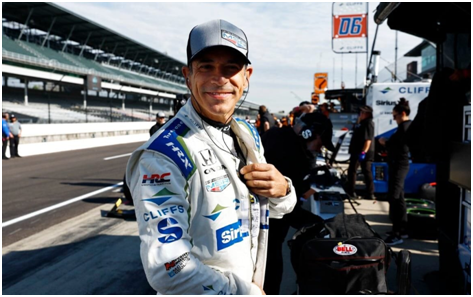
Eurofarma RC: após muitos anos a equipe renovou sua dupla de pilotos , agora com Felipe Fraga e Gaetano Di Mauro
Eurofarma RC:after many years the team has renewed its driver duo, now with Felipe Fraga and Gaetano Di Mauro

Scuderia Chiarelli : Caca Bueno se juntou a equipe como parceiro da equipe alem de piloto em 2025
Scuderia Chiarelli : Caca Bueno has joined the team as a team partner as well as a driver for 2025

Cavaleiro\Full Time

A parceria da Full Time com a Cavaleiro Sports com Denis Navarro e Rubens Barrichello
Full Time's partnership with Cavaleiro Sports with Denis Navarro and Rubens Barrichello
A Full Time Sports terá João Paulo de Oliveira.
Full Time Sports will have João Paulo de Oliveira.
0 notes
Text
Mega Lista com os Crimes do PT e de LULA
Qualquer um que trabalhar contra o lula é suspeito para os amigos do STF, mas quem o ajuda não é...
•2003 - ONG Rede 13 é extinta após receber R$ 7,5 milhões
2004 - Caso GTech (Carlinhos Cachoeira)
2004 - Escândalo dos mensaleiros (Waldomiro Diniz)
2004 - 300 Medidas Provisórias de Lula
2004 - Morrem 3 da diretoria do Bancoop (OAS e o Triplex)
2005 - Assassinato do legista do caso Celso Daniel
2005 - Escândalo dos Correios
2005 - República de Ribeirão (Antonio Palocci)
2005 - Escândalo do Mensalão - R$ 200 milhões em desvios
2005 - Escândalo dos Dólares na Cueca
2005 - Cassação de Zé Dirceu
2005 - Escândalo da Gamecorp-Telemar R$ 111 MI para Lulinha
2006 - Caso Francenildo dos Santos Costa (Antonio Palocci)
2006 - Escândalo da Refinaria de Pasadena (prejuízo de R$ 3 bilhões)
2006 - Escândalo dos Sanguessugas
2006 - Escândalo dos Aloprados
2006 - Escândalo dos Fundos de Pensão
2006 - Escândalo do Corinthians - MSI
2006 - Mesadas de Antônio Palocci
2007 - Operação Navalha
2007 - BNDES e o etanol em Moçambique
2007 - R$ 111,4 bilhões da CPMF desviados da saúde
2008 - Dossiê contra FHC e Ruth Cardoso (Dilma e Erenice Gi)
2008 - Caso Cartões Corporativos
2008 - Usina Hidrelétrica Jirau - Fraude no Leilão
2008 - Caso Fernando Pimentel
2008 - Usina Hidrelétrica de Santo Antônio - Caixa dois
2009 - Caso Lina Vieira (Dilma e Gabrielli)
2009 - Refinaria Abreu e Lima - R$ 90 milhões em propinas
2009 - Propina na compra de submarinos e helicópteros franceses
2009 - Escândalo das montadoras - Medida Provisória 471
2010 - Caso Bancoop
2010 - Escândalo Novos Aloprados
2010 - R$ 1 MI de Alberto Youssef na campanha de Gleisi Hoffmann
2010 - BTG Pactual e as sondas do pré-sal
2010 - Erenice Guerra - Tráfico de influência
2010 - Governo Lula gasta R$ 88,2 milhões nos cartões corporativos
2011 - Escândalo nos Ministérios da Agricultura, Transportes e Cidades
2011 - Escândalo nos Ministérios do Turismo, Esporte e do Trabalho
2011 - Faxina Ética no Governo Dilma
2012 - Caso Cachoeira
2012 - Escândalo no Ministério da Pesca (Ideli Salvatti)
2012 - Rosemary Noronha e Lula e os 25 € milhões em Portugal
2012 - BNDES - Usina Metalúrgica na Venezuela
2012 - Operação Porto Seguro (Rosemary Noronha)
2012 - Prisão da cúpula do PT
2013 - Início das Pedaladas Fiscais
2013 - BNDES - Rodovia em Gana
2014 - Escândalo da Petrobras
2015 - Prisão do ex-tesoureiro Vaccari Neto
2017 - Marqueteiro é preso
Pera que não acabou, agora, os crimes do LULA:
•Triplex do Guarujá
•Reformas no triplex
•Deposito dos bens
•Sitio em Atibaia
•Predio do Instituto Lula
•Dinheiro para o sobrinho
•Dinheiro para o filho na zelotes
•Dinheiro para o filho
•Dinheiro para o irmão
•Conta "amigo" na Odebrecht
•"Palestras" e instituto Lula
•Dinheiro para o assessor
•Apartamento em São Bernardo
Esses são só alguns, o que coloquei não é nem 10% de tudo que fizeram pro nosso país nesses 16 anos, se alguém lembrar de mais coisa e quiser completar a lista, fique à vontade.
e tenham em mente que todos os crimes que conhecemos em relação aos 16 anos de corrupção do PT são apenas os que foram descobertos... aínda deve ter MUITA coisa escondida
E não acabou, tem os crimes do governo atual (lula 2022-2025) do Lula e da sua corja que em breve será revelado
PT não é partido, é organização criminosa
Acho que deixei a petralhada nervosa, fiquem tranquilos, esse post não é pra defender o bolsonaro. o post é SOBRE O PT, ou seja, o post é exclusivamente sobre os crimes do petê
Mesmo assim aínda tem quem apoia esse ladrão de nove dedos...
(Brasil Livre)
0 notes
Text
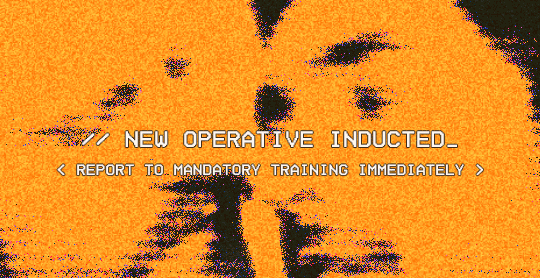
welcome to project pandora, paris ! you possess exceptional promise, but raw talent alone is not enough. i guess we'll see if you can forge yourself into something greater. for now, settle in, follow the checklist, and wait for your deployment.
[ andrew matarazzo, queer, trans masc + they/he, nerve manipulation ] daniele abreu is a neutral alignment agent of pandora selected for their cunning manipulation and con-artistry operating as an exotic dancer that made them an ideal candidate and underwent the top-secret mutation process. to the rest of the world, the twenty-eight year old originally from las vegas, nv is deceased or missing. however, in atlantis, they are now known as sonata of lust after developing the ability to control and manipulate nerves and the nervous system through touch, sight, or hearing. the agent has been with pandora for four years and is trusted for being provocative & effective, but once reprimanded for being venal & insatiable.
0 notes
Text
El 44 Festival de la Guitarra de Córdoba posiciona en primera linea el talento femenino nacional e internacional
El 44 Festival de la Guitarra de Córdoba posiciona en primera linea el talento femenino nacional e internacional https://ift.tt/I6oA3Xw La exclusiva programación del Gran Teatro durante la celebración de la 44 edición del Festival cuenta con el primer concierto de la cantante Vega sobre estas tablas, el grupo Las Migas, las voces del blues Orianthi y Danielle Nicole Band, así como La Materia, último espectáculo de la bailaora Olga Pericet El Festival de la Guitarra de Córdoba prepara una programación exclusiva en el Gran Teatro con un diverso repertorio de talento femenino, que viaja desde el blues de la estadounidense Danielle Nicole a la guitarrista australiana Orianthi, pasando por la inseparable unión del instrumento de las seis cuerdas con las voces de la cordobesa Vega o el laureado grupo Las Migas. Asimismo, la bailaora cordobesa Olga Pericet estará con el galardonado espectáculo de baile La Materia. Desde el Instituto Municipal de Artes Escénicas (IMAE) se afianza el compromiso por incluir propuestas artísticas originales creadas por mujeres en uno de los espacios escénicos más emblemáticos de la ciudad. Durante la celebración del festival, el público podrá disfrutar del talento femenino nacional e internacional con parada obligatoria en Córdoba. {loadmoduleid 146} La última artista confirmada dentro de este cartel ha sido la cordobesa Vega, que comienza próximamente la gira de su último disco Ignis. Las entradas para este concierto, que tendrá lugar el 6 de julio en el Gran Teatro, están ya a la venta en la web oficial del IMAE y del Festival de la Guitarra. Tras dos años de proceso creativo, presenta el que quizás sea uno de sus proyectos más ambiciosos, acompañada por el productor Ricky Falkner. Con este disco se reafirma como artista multidisciplinar con una carrera alternativa y exitosa gracias a su esfuerzo, constancia y determinación. El primer espectáculo del Gran Teatro durante el FGC tendrá lugar el 3 de julio con La Materia, el segundo capítulo de la trilogía que la bailaora Olga Pericet inició con La Leona y que culminará con La Invencible. Esta pieza, que cuenta con el Premio Max 2024 a la Mejor Coreografía, se inspira en las guitarras del mítico luthier Antonio de Torres con una mirada al instrumento desde dentro. En La Materia, Pericet se une al bailarín y coreógrafo Daniel Abreu, también Premio Nacional de Danza, para codirigir, coreografiar e interpretar una pieza que trasciende todas las etiquetas. The love you bleed es el título del nuevo álbum de Danielle Nicole Band, una invitación a explorar el amor desde diferentes perspectivas, que se escuchará en Córdoba el 5 de julio. Con estas letras se afianza como una de las voces más poderosas del blues moderno, cosechando durante su carrera ocho Blues Music Awards y convirtiéndose en miembro del Salón de la Fama de Kansas City. Las protagonistas del concierto del 10 de julio en el Gran Teatro serán Las Migas, grupo español cuya música combina el flamenco con otros estilos, creando una atmósfera única. Actualmente se encuentran inmersas en la producción de su último disco, que verá la luz en 2025. El grupo ha cosechado grandes reconocimientos durante sus 20 años de carrera, como tres nominaciones al Latin Grammy en la categoría de Mejor Álbum de Música Flamenca, alzándose con el galardón en 2022. Asimismo han conseguido el Premio MIN por los álbumes Cuatro y Libres. Orianthi, guitarrista australiana de referencia en el panorama actual del blues y del rock, se subirá al escenario el 11 de julio. Esta será la primera de las tres fechas anunciadas en España por esta guitarrista, quien ha trabajado con leyendas de la guitarra como Steve Vai, Joe Bonamassa y Carlos Santana; llegando a ser elegida para la gira This Is It de Michael Jackson. via Música https://ift.tt/L0vFHao March 07, 2025 at 02:28PM
0 notes
Text
Festival de Curitiba anuncia In on It Alaska Os Mambembes e começa venda de ingressos
Festival de Curitiba anuncia “In on It”, “Alaska”, “Os Mambembes” e começa venda de ingressos https://ift.tt/dhpnimW O Festival de Curitiba anunciou na manhã desta quarta-feira (5) uma série de peças importantes que estarão presentes na edição deste ano. Entre elas, estão “Alaska”, “Os Mambembes” e a volta de “In on It”, espetáculo que fez grande sucesso quando veio para a edição de 2010. As revelações foram feitas pelos diretores do festival ao jornal O Globo. Com Louise D’Tuani e Rodrigo Pandolfo, “Alaska”, escrita pela americana Cindy Lou Johnson, conta a história de duas pessoas que ficam presas dentro de uma cabana em meio a uma nevasca terrível. Já “Os Mambembes”, que será a peça de abertura do festival e da Mostra Lúcia Camargo, tem em seu elenco nomes como Paulo Betti, Déborah Evelyn e Cláudia Abreu. “In on It”, montagem de Enrique Diaz a partir de um texto do canadense Daniel MacIvor, ganhou vários dos principais prêmios de teatro no Brasil. Os dois atores, Emilio Mello e Enrique Diz, se revezam em dez papéis e, tendo como apoio apenas duas cadeiras e a iluminação, encenam várias histórias diferentes. Quando passou pelo festival, catorze anos atrás, a peça foi um sucesso imenso. Além dessas, o festival já havia anunciado a presença de “Prima Facie”, monólogo de Débora Falabella que vem sendo considerado um dos melhores espetáculos da temporada, e “O Céu da Língua”, com Gregório Duvivier. O anúncio da programação completo será feito ainda nesta quarta. Os ingressos também começam a ser vendidos a partir das 20h. Em breve, o Plural também trará reportagens sobre várias das peças e um serviço completo sobre o festival. O post Festival de Curitiba anuncia “In on It”, “Alaska”, “Os Mambembes” e começa venda de ingressos apareceu primeiro em . via https://ift.tt/EigeXHM February 05, 2025 at 10:34AM
0 notes
Text


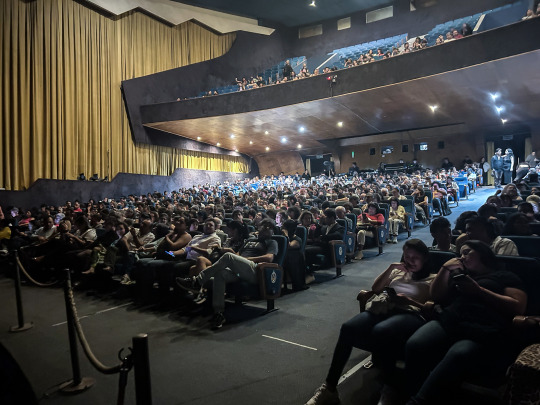
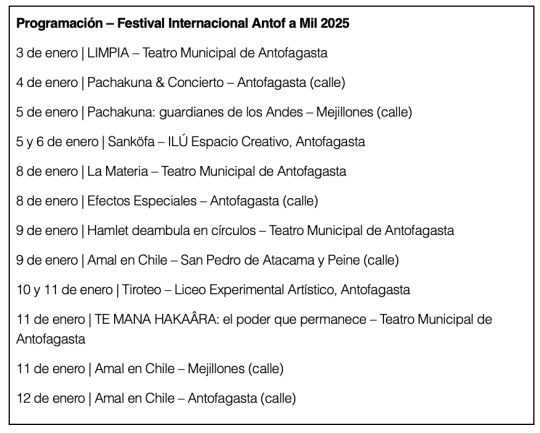
A tablero vuelto comenzó el Festival Internacional Antof a Mil 2025 en el Teatro Municipal de Antofagasta La 25° versión del festival, presentado por Escondida | BHP y Fundación Teatro a Mil, se desplegará entre el 3 y 12 de enero de 2025 en salas y calles de Antofagasta, Mejillones, San Pedro de Atacama y Peine.
Toda la información de la cartelera y actividades de formación y mediación gratuitas está disponible en Antofamil.cl.
El viernes 03 de enero se inauguró en Antofagasta la edición n° 25 del Festival Internacional Antof a Mil, con la reconocida obra nacional LIMPIA, una puesta en escena de Alfredo Castro basada en la novela homónima de la escritora chilena Alia Trabucco Zerán, convocando a más de 700 personas en el Teatro Municipal de Antofagasta. Esta aclamada obra, que marcó el inicio de este festival, presentado por Escondida | BHP y Fundación Teatro a Mil, consolidándose como un espacio de encuentro cultural y comunitario.
Evelyn Campbell, directora de gestión institucional de Fundación Teatro a Mil, indicó que “con LIMPIA damos el puntapié inicial a una nueva versión del festival en la región de Antofagasta, que llega con un marcado enfoque comunitario y territorial, ofreciendo una programación nacional e internacional de primer nivel, talleres, conversatorios y actividades para Pequeñas Audiencias”.
Por su parte, Abel Benítez, director de Asuntos Corporativos Escondida | BHP, destacó la relevancia del festival, impulsado por la compañía desde sus inicios. “Este año estamos dando inicio de manera simultánea al Festival tanto en la región Metropolitana como en Antofagasta, lo que refleja nuestro compromiso por seguir impulsando la creación de espacios que promuevan el desarrollo del arte y la cultura. En esta versión, el impacto de Antof a Mil se extenderá más allá de Antofagasta, alcanzando comunas como Mejillones, San Pedro de Atacama y localidades como Peine. Los invitamos a ser parte de esta gran celebración de las artes escénicas”.
Próximas funciones
El sábado 4 de enero, la explanada del Estadio Regional de Antofagasta se convertirá en escenario para Pachakuna & Concierto, un programa doble que comenzará a las 20:30 horas con el pasacalle Pachakuna: Guardianes de los Andes, de la compañía La Patogallina junto a comparsas andinas locales, seguido de un concierto de Inti Illimani Histórico y la banda Tambobrass.
Al día siguiente, el pasacalle de La Patogallina, Pachakuna: guardianes de los Andes, se presentará en Mejillones a las 20:30 horas, frente al Museo de Mejillones.
Seleccionada por el Jurado de Antofagasta del festival, se presentará los días 5 y 6 de enero la obra de danza Sanköfa, que rescata la historia y la música de los afrodescendientes, en ILÚ Espacio Creativo (entradas agotadas).
En tanto, las calles de Antofagasta recibirán el 8 de enero la creación argentina Efectos especiales, un espectáculo ciudadano de los artistas argentinos Luciana Acuña y Alejo Moguillansky que invita al público a ser testigo y parte de un emocionante rodaje de cine en vivo a las 19:00 horas en el centro de la ciudad (Paseo Manuel Antonio Matta desde calle Arturo Prat).
Desde España, llegan los Premios Nacional de Danza, Olga Pericet y Daniel Abreu, con su pieza La materia, que se presentará el mismo 8 de enero en el Teatro Municipal de Antofagasta, gracias al intercambio entre el festival y Teatros del Canal de la Comunidad de Madrid. La obra es un viaje a los orígenes del flamenco inspirada en las guitarras del luthier Antonio de Torres, considerado el padre de la guitarra española moderna (entradas gratuitas para descargar en Antofamil.cl).
Dentro de las obras nacionales, se presentará el 9 de enero, también en el Teatro Municipal de Antofagasta, la obra Hamlet deambula en círculos, dirigida por Cristián Plana y protagonizada por el reconocido actor Héctor Noguera, quien celebra con este montaje los 30 años de su compañía Teatro Camino.
La segunda seleccionada por el Jurado de Antofagasta tendrá funciones el 10 y 11 de enero en la sala del Liceo Experimental Artístico. Se trata de Tiroteo, escrita y dirigida por Franco Rocco Cancino, una reflexión sobre la educación y la violencia en tiempos actuales.
En paralelo, el 11 de enero será la única función de TE MANA HAKAÂRA: el poder que permanece en el Teatro Municipal de Antofagasta a las 21:00 horas (entradas gratuitas para descargar en Antofamil.cl). Esta coproducción de Teatro a Mil es la más reciente obra de danza de la compañía antofagastina La Huella Teatro, bajo la dirección de Alejandra Rojas, que pone en valor la memoria rapanui a través de sus mujeres.
En tanto, el festival llegará a su fina con Amal, una marioneta de 3.5 metros de altura que representa a una niña siria refugiada de 10 años cuyo nombre en español es Esperanza. El jueves 9 de enero a las 11:00 será el turno de San Pedro de Atacama (Ignacio Carrera Pinto con Pedro de Valdivia), para luego presentarse el mismo día a las 20:00 horas en Peine, en la Iglesia San Roque. Su recorrido continuará el sábado 11 en Mejillones, a las 11:00 horas en la Plaza de la Cultura (Av. San Martín).
La gran travesía de Amal por la zona concluirá con dos apariciones en la capital regional el domingo 12 de enero: a las 11:00 horas en el sector norte de Antofagasta (Río Maule con Detective Solón Salas Fuentealba) y por la noche, a las 20:00 horas, se despedirá de los antofagastinos en Av. Grecia con Hugo Silva Endeiza.
Amal será recibida por comunidades locales -que ya se están preparando para darle la bienvenida- y recordará al público que la niñez debe ser protegida siempre y en todo lugar, entregando un mensaje de humanidad y tendiendo un puente hacia las celebraciones por los 80 años de la entrega del Premio Nobel a Gabriela Mistral, ya que sus poemas serán parte de la propuesta artística de Amal en Chile.
Programación Lab Escénico
Complementando los espectáculos, el programa de mediación del festival, LAB Escénico, desarrollará diálogos post función en cada espectáculo de sala, dos talleres con artistas de las obras La Materia y de Efectos Especiales, y tendrá sesiones de su programa Pequeñas Audiencias asociadas a Amal en Chile junto a estudiantes de la Escuela Juan Pablo II de la población Bonilla en coordinación con el Servicio Jesuita Migrante, con el apoyo de UNESCO, ACNUR y Unicef.
Toda la programación de Antof a Mil es gratuita. Los espectáculos de sala serán con inscripción previa en Antofamil.cl y los de calle serán con acceso liberado, sin inscripción previa.
#Teatro#Art#Arte#Arts#Culture#Cartelera#Chilean#LATAM#Chile#Teatral#Dramaturgia#Tablas#Escenario#Escenografico#Presentacion
0 notes